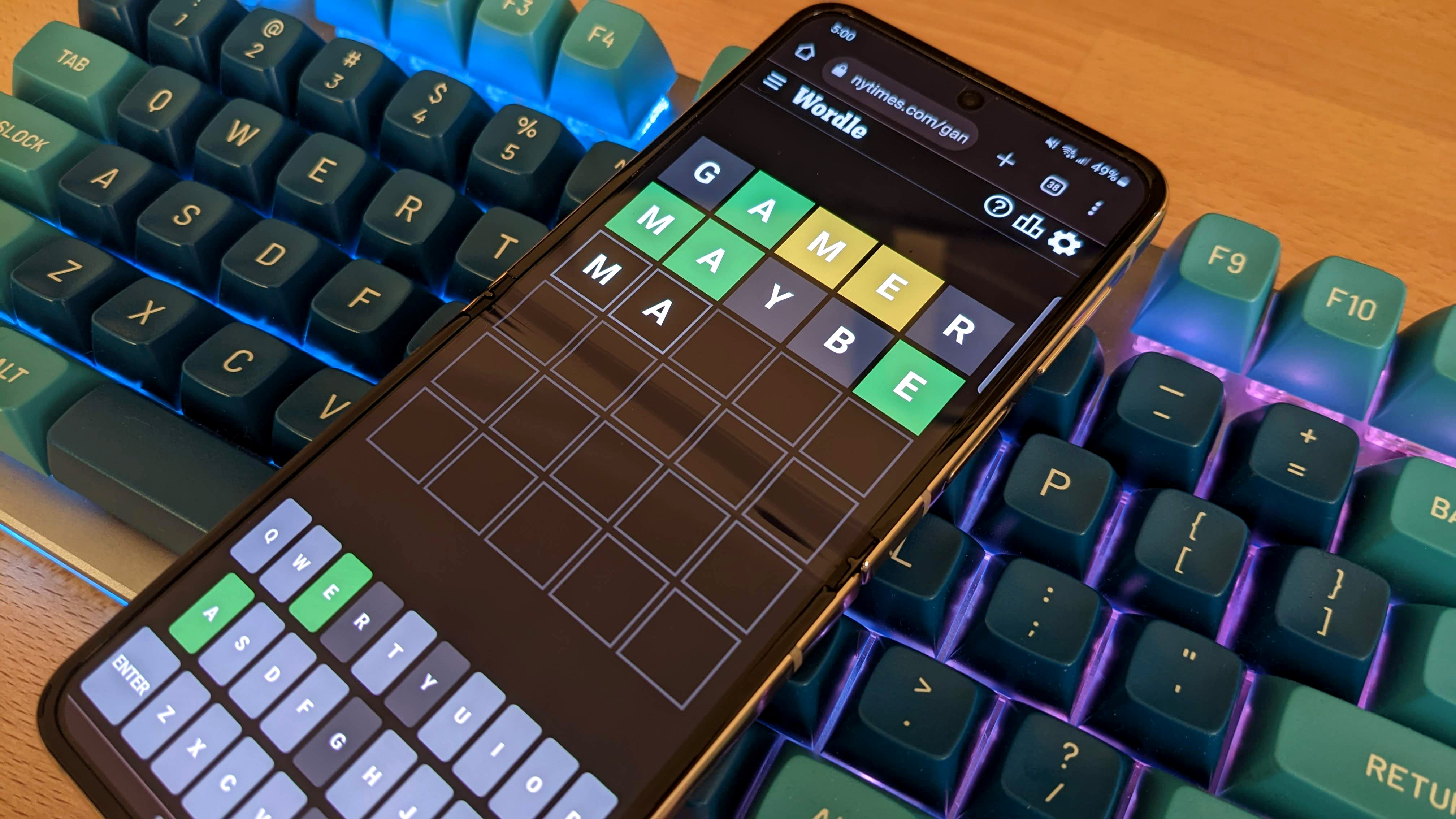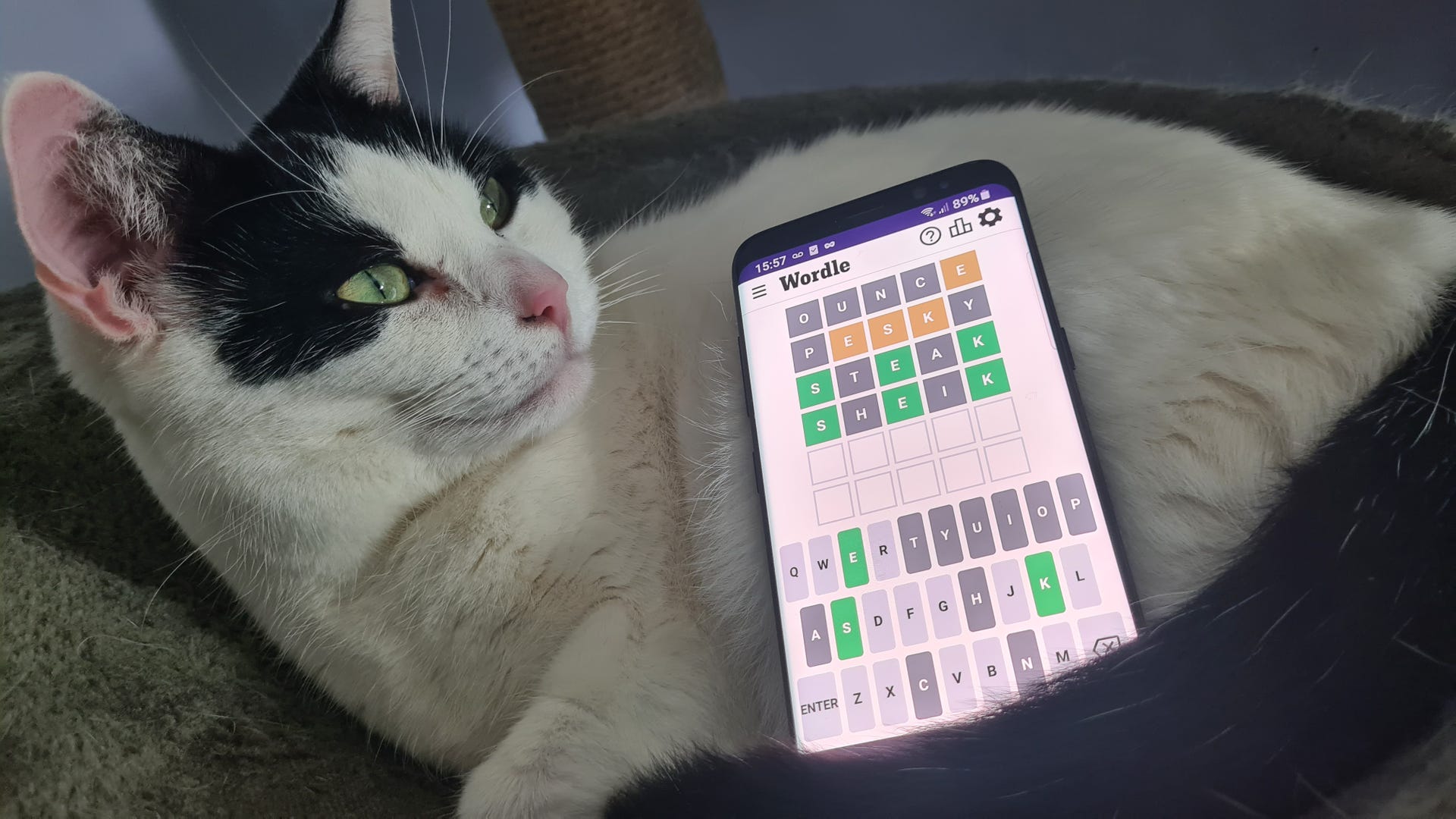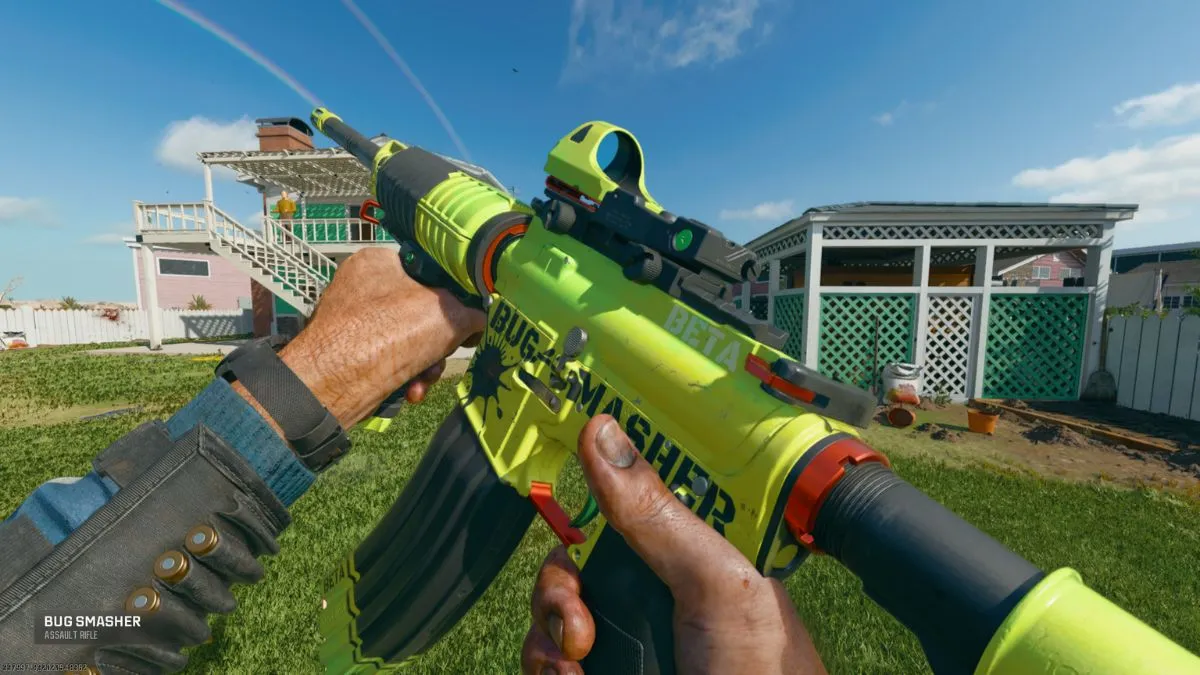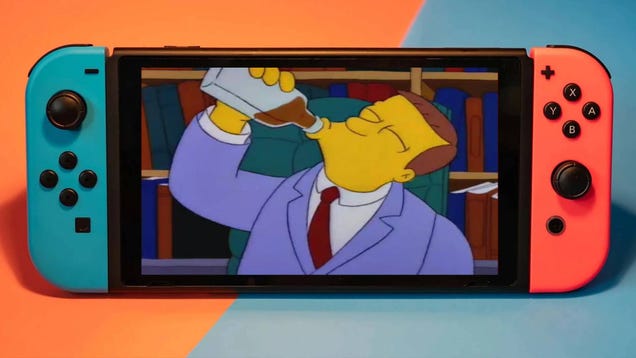
How do you top a new theme park and a billion dollar animated movie? Nintendo will try to answer that question with Super Mario Wonder, its new game that can appropriately be called the Year of Mario.
We recently got a chance to go hands-on with Super Mario Wonder, and as part of that opportunity we were able to talk to two remarkable Nintendo developers: director Shiro Mouri and producer Takashi Tezuka. Tezuka needs no introduction for Nintendo fans. A Nintendo stalwart since the 1980s, Tezuka is an instrumental part of Mario history. Mouri, meanwhile, has worked on everything from Super Mario Sunshine to New Super Mario Bros. U.
Together the pair are trying to put forward anew vision for Mario; one that’s wilder and more imaginative than ever. Read on for our complete interview!
Mouri-san, you have a lot of experience working on 2D Zelda games in addition to 2D Mario games. Has that Zelda experience influenced Super Mario Bros. Wonder at all? Can lessons from one apply to the other, or are Mario and Zelda so different that you must think of them completely independently?
Shiro Mouri, Director: It’s not completely different and there are connections between those two. When we were developing this new 2D Mario we really wanted the idea of the player being able to freely choose to be a strong concept that we really wanted to include. And so what we did this time was include features like being able to choose a character or choose the abilities of a character through the Badge system or being able to freely choose the course you want to take on. And I feel like I’ve really been able to leverage my experience working on 2D Zelda games in that capacity.
Tezuka-san, your career has been amazing, going back to the original Mario and Zelda games. How do you think about nostalgia and its effect on some players today with Super Mario Bros. Wonder, when you yourself helped create that nostalgia? Is it a good thing or is it a problem as you create the game?
Takashi Tezuka, Producer: I think it’s a little bit of both. This is something I think is a good thing. I think the fundamental gameplay of Mario hasn’t changed and that would be a good nostalgia. That’s really that active searching out of things to do. You are the one in charge of how you play the game. And even if you fail, you are able to do it over and over again and through that repetition become a better player. By becoming a better player there’s that feeling of satisfaction you get.
Over the course of creating new games in the Mario series, we’re always looking at creating more volume, more splendid, more extravagant ways to play, so we’re always thinking about those things as we’re creating games. And traditionally you would clear one level and move to the next, what occurs from that is you might lose some interest in the levels you’ve already cleared, and so when we’re looking at creating more volume, that style of gameplay where you clear something and forget about what you’ve done has become an unfortunate side effect of that scope-building process. And I really didn’t think there was any way of getting around that style of development, that style of gameplay.
Now with Wonder, since we’re taking all of this time and effort to create this very big, splendid game, I thought it would be a waste of our effort and time if people did not have the ability to replay some of those levels. And so my mindset changed and I wanted people to replay levels and find something interesting with each of those replays. And I really think that ties back into that original style of gameplay where you would challenge the same course over and find new ways to proceed, so this is a connective tissue between those two ideas.
Mouri-san, this is the second 2D Mario game you have directed after many years of serving as a programmer on them. How has your programming experience influenced your approach as the game director? And what have you learned about the other disciplines of game development in your role as director?
SM: I certainly think that my experience as a programmer has really come in handy. For example, when you’re talking about playing a game online, it’s really, what’s technically difficult or possible is kind of set already. So within those kind of boundaries, leveraging my experience as a programmer, I’ve been able to figure out a way to implement this in such a way that it’s technically possible but also really enjoyable and fun. And what I’m about to share is not the ultimate answer to how to direct a game, but my personal philosophy in that whenever I make a decision I really like to analyze things.
And after that analyzing, if I find that there are more advantages than disadvantages, then it’s something that I implement. And that’s something that I really feel like my experience as a programmer has really helped me through. And in terms of this newfound perspective as a director, I think it boils down to not so much what I can do or what I want to do and what I can do to make the work of others a lot easier and a lot more effective and efficient.
Tezuka-san, given that you are responsible for producing the game – you must make sure everyone is on the same page – is it fair to say that you command instant respect from everyone on the team given your incredible record of designing and producing Mario and Zelda games?
TT: [laughs] Well I don’t know if that’s true or not…
SM: It’s definitely true.
TT: But there are a lot of people who want to talk to me. Within our development area we have some small tables with snacks on them, and those are really just traps to entice me to come into that area [laughs]. So when I’m lured in to take a snack, that’s when they pounce and start talking to me. And they don’t need to do that because I really want to speak with and interact with as many of the younger staff members as I possibly can. And I’m always telling them very frankly, ‘If you have something you want to ask me or something you want to talk about, just come on up.’”
Do you see mentorship as part of your job?
SM: Definitely. I think so.
TT: I’m very very interested to see how the younger generation of players interact with Mario. How do they play Mario? How does that differ from the way I traditionally played Mario? How do they think of him as a character? I’m really curious to see what that difference is between myself and the younger staff members. And that’s because I know that they will become the curators or shepherds Mario going forward.
Did Super Mario Maker shape the way the younger staff thinks about Mario?
TT: I really hope that Mario Maker is impacting the really young players – not so much the staff, but the really young children. I would love it if some of those young children would be interested through Mario Maker in the game industry and creating games and if they eventually came to work at Nintendo that would be wonderful. [laughs] It’s not Mario Maker, but we do have a staff member who played Mario Paint as a child and became interested in the creation of video games and now works at Nintendo.
What feedback has Miyamoto-san given you on Wonder, and what have you learned from him about making Mario games (and in your career in general)?
TT: With Wonder in particular, it wasn’t like Mr. Miyamoto was in our hip pocket during this whole time whispering in our ears or anything like that. Sometimes he would come by where we are working and look at things and give some opinions. He would generally observe things and make comments here and there, and even things that didn’t seem like they were big comments, I have worked with Mr. Miyamoto for a long time and really understand him, so I was able to get what he was implying or getting to and we would have conversations around those sorts of topics.
SM: He did have a comment about Elephant Mario. It was a phase where we still had tentative visuals for Elephant Mario, and we had plans to adjust the visuals already, but he had come and taken a look before that and he gave us the sharp comment that ‘This doesn’t look like a Mario character.’ Along the same topics, there was the idea of how Elephant Mario sprays water, he came and said that if an elephant was actually spraying water, it wouldn’t move that way, and that was an example of feedback he gave us.
Where did the idea for Super Mario Bros. Wonder start? Do you look for a “hook” at first, like Elephant Mario or the Wonder seeds in general, and build around that? Or does the idea begin elsewhere?
SM: When we were thinking about creating this new 2D Mario, there were two concepts that we held: the first concept is the freedom to choose, which I think I touched on a bit in your question about 2D Zelda. And the second concept is the idea that it’s packed with secrets and mysteries. And this idea of secrets and mysteries, I think the original Super Mario Bros. was exactly that. But as we continued to create Mario games, this idea of secrets and mysteries started to become a standard, or something expected, and that was a challenge that we saw. And so in order to overcome that challenge, there’s something we tried: what we did was, in Mario games, you know when Mario goes down a pipe you can go to the underground area or if he climbs the vines you can go to the sky area?
Well, we thought, ‘What can we do to create an updated version of that?’ So one idea that came up was, when you use an item you are taken to a different area. And so when we created a prototype and showed Mr. Tezuka this, he said, ‘Well, even if you’re just taking the item, if you’re transported to somewhere else, that’s the same. Can’t you just change the place as it is right now?’ When I heard that, I said, ‘Let’s just go all the way. Let’s just change the entire screen. So that’s where we ended up testing out ideas like the warp pipes squiggling around, or the entire screen tilting or slanting, or even having to travel on top of a horde of enemies. And that really was the starting point of Wonder.
[Shigeru Miyamoto] had come and taken a look before that and he gave us the sharp comment that ‘This doesn’t look like a Mario character.’
TT: And at the time, Mr. Mouri was thinking, ‘If we do this for a couple courses, that’s great.’
SM: Yeah, that’s exactly right.
TT: And so what I did was then suggest, ‘Well if we’re going to do it, we should just go ahead and have these Wonder effects that impact these courses on every one of the main courses.’ I think he was probably questioning inside whether or not I was serious. [laughs]
SM: Yes, that’s exactly what I was thinking: Is he serious? And to really bring this to fruition, I thought, ‘I can’t be the only one coming up with ideas. So I started to solicit ideas from the entire team. And if I were to give it a number of ideas that came up, I’d put it at 1000 or even 2000 ideas that came up. And from within those ideas we whittled it down to ones that had potential, created prototypes, and then took a look, and then from there we would think, ‘Oh no we should’ve just done it this way or that way’ and that’s how these Wonders came about.
TT: I wasn’t forcing them to do anything impossible. [laughs] And at that time we didn’t have a deadline for the end of development, so let’s do what we can do. And I purposely didn’t want anyone to have any sort of negative reaction and say, “We don’t have time to do that.” So we did not set a timeline.
Did any particular 2D Mario game serve as an inspiration to you on this one? Did you go back and play any of the classic 2D Mario games prior to the start of production on Wonder, or perhaps even during production?
SM: I think we did play past titles, but I don’t think there’s anything specific, and I don’t think there’s any kind of inspiration that really connected to the creation of Super Mario Bros. Wonder. And because this project was really about creating something new, we didn’t take any inspiration from a past title.
TT: The opposite was true, actually. We wanted to make sure we weren’t thinking about older titles in the series. Trying to create the game with a spec in mind tends to lead to a narrow focus in development. And so we really set aside time so that we weren’t focused on just using those traditional enemies. We wanted to make sure that we were building in time to do something new.
This feels like Super Mario Bros. 4, or Super Mario World 3, if you prefer, in so many ways. Would Miyamoto-san ever allow you or anyone else to be so bold as to make a game with that name?
TT: Hmm…I don’t think he’s ever going to say, ‘Go make [SMB] 4.’ And I really think he wants to see this evolution in the series as we move forward and continue making games, and I don’t think he’s really that particular about the naming convention.
Multiplayer in 2D Mario games has evolved quite a bit over the years, to the point that Wonder has 12-friend rooms in it! How much weight is multiplayer given during Wonder’s design compared to other 2D Mario games, and how does multiplayer influence the level design, if at all?
SM: So first of all, we didn’t design the game such that it should be played in multiplayer or that it should be played in single-player. We designed it such that it’s enjoyable for both types of play. And what we wanted to make sure we do is that it’s up to the player whether they want to play single-player or local multiplayer or online multiplayer. What we really made sure to do and kept in mind from a game design perspective is to avoid making courses or areas where it’s best enjoyed in multiplayer or best enjoyed in single-player. We kept in mind to make everything such that it’s enjoyable however you play it. The fact that you can select all 12 characters freely or the fact that you can go to any of the courses within a world freely, those are meant to be such that whether you’re playing single-player or multiplayer you can enjoy them to the full extent. And what we wanted to make sure we do this time with the concept of multiplayer is whether it’s online or local multiplayer that we provide a stress-free environment and experience.
Some specific things we did was, for example, we got rid of the idea that players bump into each other. Because, for example, Elephant Mario is very big, or there’s a Wonder where Mario becomes very, very tall, and so we wanted to make sure that the gameplay experience, regardless of any of those things happening, becomes a stress-free experience. And the concept behind the online play this time is the idea of ‘casual connection.’ And what this means is that being able to approach the multiplayer game with a single-player vibe in that the matchmaking happens behind the scenes so you don’t have to wait for other players to join, and this also contributes to a stress-free experience.
Once you do connect, the people who are actually playing the game, real-time, at this moment, appear as live shadows. And these live shadows, they are only beneficial. For example, if you greet them, they’ll greet you back. If you fall in a pit, they can help you. They can provide items. And so this idea of gifting items, the idea of having stock items, was a spec that existed in Super Mario World. When you’re in a pinch, you’re able to use that item that’s in stock, or if you’re looking for a different powerup, I think that was possible in Super Mario World. That’s also present in this game, but what we added this time was that we thought it might be fun to, when you’re online, be able to pass along this item, and so that’s why the item stock system was implemented.
This is one example of how we tried to make the game such that it’s enjoyable to its fullest extent whether you’re playing single-player, local multiplayer, or online multiplayer. This online experience in this game is really a new online Mario experience. I would love for many people across the globe to experience it. And as I mentioned before, only beneficial things happen to you, so I hope that everyone around the world will leverage this and have fun with it.
For each of you: what is your favorite 2D Mario game ever (besides Wonder)?
SM: For me it’s the original Super Mario Bros., and that’s because there are secrets and mysteries galore.
TT: That’d be Super Mario Bros. 3 for me. I just remember we really did a lot of hard work during development of Super Mario 3. That’s really in my memory.
Super Mario Bros. Wonder releases on October 20 exclusively on Nintendo Switch.
Ryan McCaffrey is IGN’s Executive Previews Editor.






